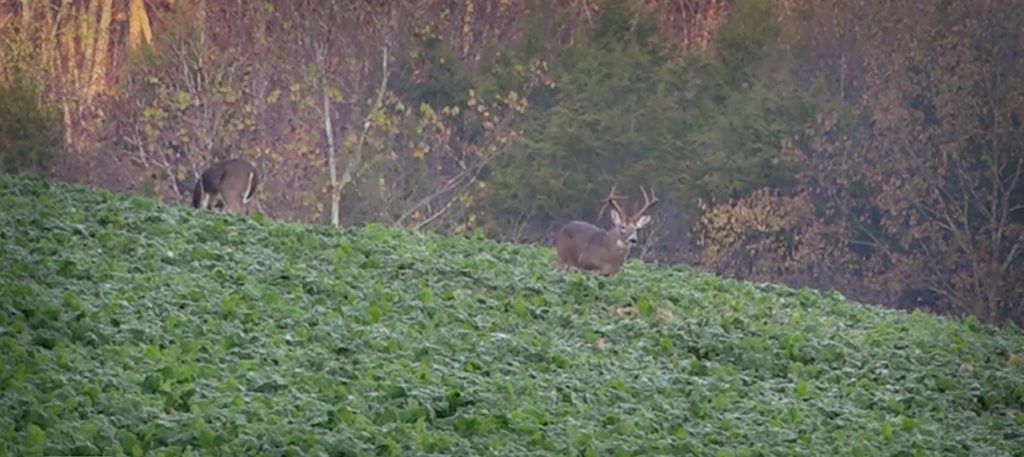Strategies For Hunting The Wind – Part 1
Filed under: Hunting Blog, Hunting Tactics
Two weeks ago I shared the advantages of flat ground to produce mature bucks. That discussion was more about the ability to produce quality forage and therefore quality bucks (if they are allowed to mature). There is another substantial advantage to flat ground. It may be the best reason to seek a hunting property that is flat versus steep.
The huge advantage of hunting flat ground is that the wind seldom swirls where the topography is flat. The wind does change directions as fronts pass, etc., but it rarely swirls and certainly doesn’t swirl on a constant basis. Swirling winds are often caused by changes in topography. Changes in topography create eddies where the wind sinks and rises. Rapid changes of topography also create temperature gradients (warm air rises and cool air sinks). These temperature gradients cause thermals or air moving based on slope and temperature.

Mature bucks use both the terrain and how air moves across the terrain to help them avoid predators.
Deer move the most during dawn and dusk. There is more air movement due to thermals during these time periods because this is when the temperature is changing the most. It may well be that in areas with steep topography, deer are the most active during dawn and dusk to take advantage of swirling winds to aid avoiding predators (two and four legged). Swirling winds and thermals allow deer to detect predators from multiple directions not just one (like what would occur in areas where the wind is typically out of one direction). There can be some thermal action in flat country. However, the direction and duration of the thermals seem to be much more predictable compared to areas with steep topography.
Most hunters throughout the whitetails’ range have access to hunt flat ground. My property is the opposite of flat. In fact, it changes elevation 350+ feet several times due to ridges and creeks. To reduce the chance of being detected by a buck’s nose I use a complete system of cleaning my gear and good personal hygiene, including doing laundry for better deer hunting.
I have and still do spend hours pondering how deer use the wind! I make no claims that I’ve figured that out yet. In general, deer like to move with the wind in their advantage. However, what is “in their advantage?” Is it in front of them so they can detect threats before they approach an area or is it when the wind is behind them and they can detect threats that might approach from the rear?
Deer obviously move in all directions in relation to the wind. If the wind remains out of the north for a week, they don’t end up traveling miles and miles north simply because they wanted to keep the wind in their face. I think deer are much more sensitive to thermals and minor wind currents than most hunters realize. Hunters, myself included, seem to get hung up on the general wind direction. I believe deer avoid two and four legged predators by paying attention to thermals (air moving up or down in elevation because of temperature gradients). These thermals can occur due to slope, shade/sunlight patterns, etc.
There are several advantages to hunting flat ground. These advantages include producing better quality forage so bucks can express more of their potential and being able to predict the prevailing wind direction while having fewer thermals. These are two huge advantages to any deer hunter. Next week: specific strategies for hunting and using wind to your advantage.
Growing Deer together,
Grant



